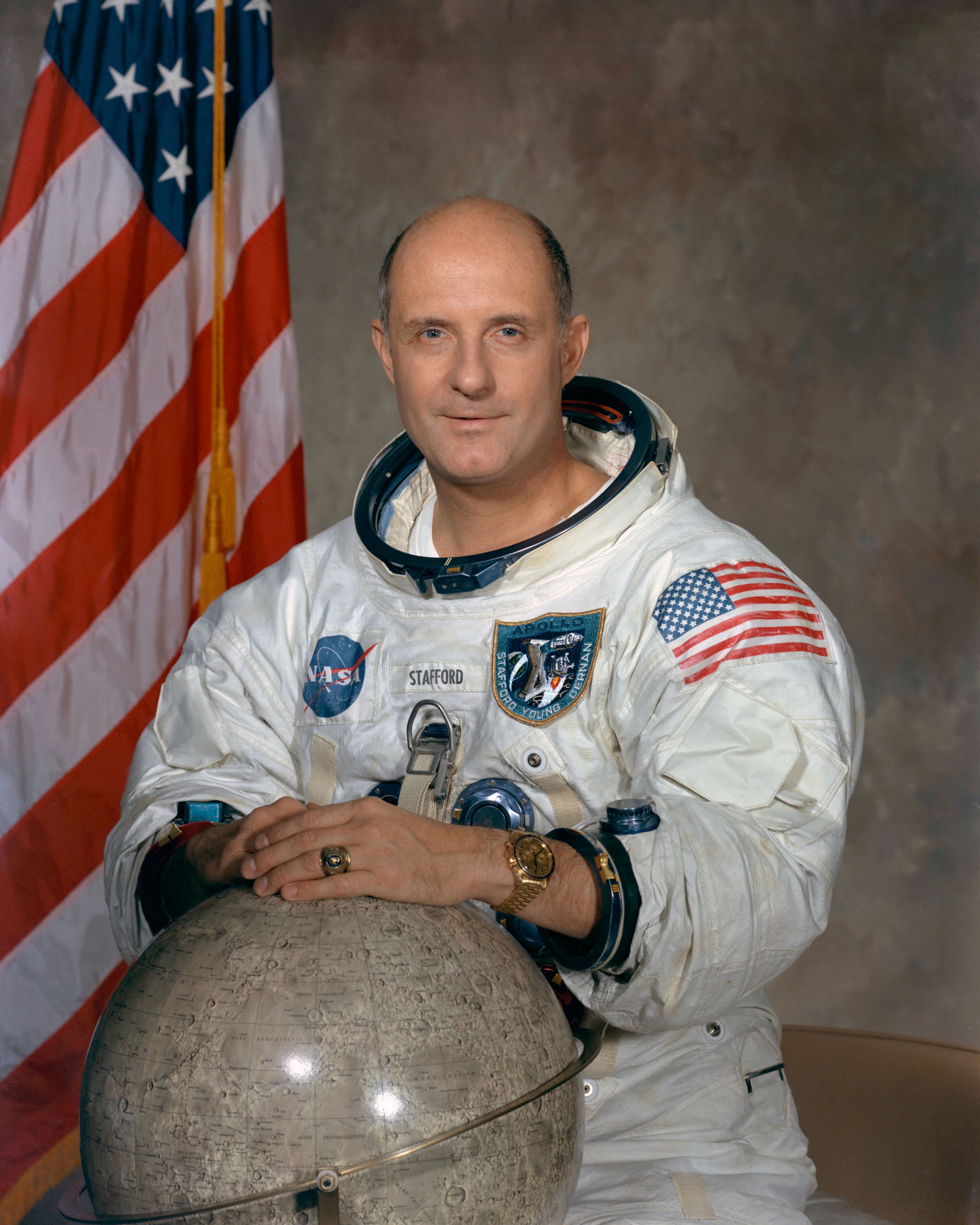Get Today in Masonic History into your Inbox. Sign up today for one of our email lists!
Need an article for your Trestleboard/Newsletter see our Use Policy
Thomas Patten "Tom" Stafford is Born

Today in Masonic History Thomas Patten "Tom" Stafford is born in 1930.
Thomas Patten "Tom" Stafford is an American Astronaut.
Stafford was born in Weatherford, Oaklahoma on September 17th, 1930. He graduated from Weatherford High School in 1948. He was active in the Boy Scouts in his youth and achieved the rank of Star Scout. Stafford earned a Bachelor of Science degree with honors in 1952 from the United States Naval Academy. He was commissioned a second lieutenant in the United States Air Force.
Stafford was selected among the second group of Astronauts by the National Aeronautics and Space Administration (NASA) in September of 1962. His selection was for the Gemini and Apollo missions. Stafford's first flight into space with was with Mercury Astronaut Alan Shepard on Gemini 3. When Shepard developed an inner ear infection, Stafford was placed as a the backup pilot on the mission.
In 1965, Stafford piloted Gemini VI. On that mission he and spacecraft commander Wally Schirra developed techniques to prove basic theory and practicality of a space rendezvous. They did this by performing the first space rendezvous. The data they collected would be instrumental in establishing procedures for space rendezvous during the Apollo missions to the moon.
During the Gemini missions, Stafford held the record for the briefest duration between space flights. This occured when tragedy struck the space program when in 1966 Astronauts Charlie Bassett and Elliot See died in a tragic plane accident on their way to train for their Gemini mission.
From 1966 to 1968 Stafford headed the mission planning analysis and development responsibilites for the astronaut group of the Apollo program. He developed and demonstrated various techniques that were essential to carrying the astronauts to the moon and returning them safely. This included the Apollo 10 mission which Stafford commanded where the crew successfully flew the Lunar Module during a Lunar orbit and then made a successful rendezvous around the moon.
Stafford was also responsible for getting color television involved with the Lunar missions. NASA was skeptical until they realized the public reaction to seeing things in full color from the missions. The only aspect of the missions that were not broadcast in full color was the Apollo 11 lunar surface television feed which did not have a mission approved color camera.
In 1975, Stafford was part of the Apollo-Soyuz Test Project which culiminated in the historic first meeting of American Astronauts and Soviet Cosmonauts in space.
After NASA, Stafford remained in the military and eventually achieved the rank of Lieutenant General.
During the first Bush Administration, Stafford was tapped to develop a plan for the American Space Program. George H.W. Bush wanted America to return to the Moon and eventually to head to Mars. In June of 1991, after an extensive review Stafford and Vice President Dan Quayle presented their findings in a report titled America at the Threshold which outlined the next 30 years of the American space program.
Stafford was initiated into Western Star Lodge No. 138 in Oaklahoma.
This article provided by Brother Eric C. Steele.

